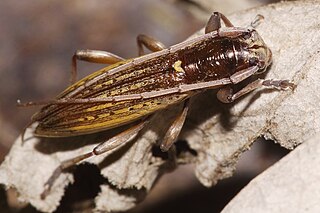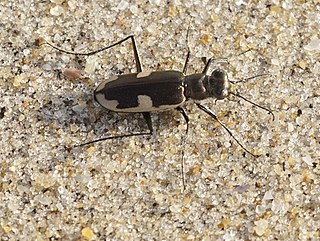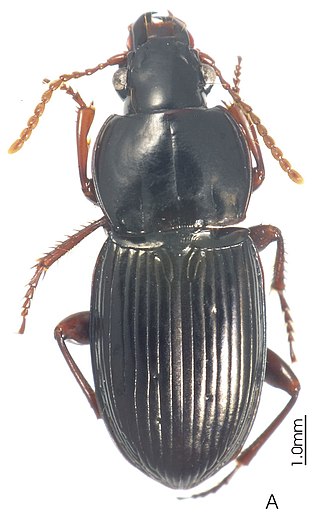
Chalinolobus is a genus of bats, commonly known as pied, wattled, or long-tailed bats. They have fleshy lobes at the bottom edge of their ears and on their lower lips. The bats otherwise classified in the genus Glauconycteris are included in Chalinolobus by some zoologists.

Mauisaurus is a dubious genus of plesiosaur that lived during the Late Cretaceous period in what is now New Zealand. Numerous specimens have been attributed to this genus in the past, but a 2017 paper restricts Mauisaurus to the lectotype and declares it a nomen dubium.

The Lord Howe long-eared bat was a vespertilionid bat known only by a single specimen, a skull found on Lord Howe Island in 1972. A mammalian insectivorous species resembling the long-eared Nyctophilus, with an elongated head that is comparatively larger, about which almost nothing is known. The bat may have been casually observed in flight during the twentieth century, but is likely to have become extinct since the island's discovery and occupation. The demise of N. howensis is possibly the result of shipwrecked rats and the owls introduced to control them.

Xylotoles is a genus of flat-faced longhorns in the beetle family Cerambycidae. There are more than 15 described species in Xylotoles found mainly in New Zealand, Australia, and surrounding islands.
Epimicodema is a genus in the ground beetle family Carabidae. This genus has a single species, Epimicodema mastersii. It is found in Australia.

Gigadema is a genus in the ground beetle family Carabidae. There are about 13 described species in Gigadema, found in Australia and New Guinea.

Distipsidera is a genus of tiger beetles. There are about 12 described species in Distipsidera, found in Oceania.
Euzona is a genus of tiger beetles found in Australia. It was formed from the breakup of the Cicindela genus, and just like Cylindera, is in a state of dispute. Scientists do not agree whether the genus should be considered as a subgenus of Cicindela or kept in its current taxonomic rank. The genus contains the following species:

Hypaetha is a genus in the beetle family Cicindelidae. There are about 14 described species in Hypaetha.

Lecanomerus is a genus in the beetle family Carabidae. There are more than 30 described species in Lecanomerus.

Demetrida is a genus in the beetle family Carabidae. There are more than 100 described species in Demetrida.

Agonocheila is a genus in the beetle family Carabidae. There are more than 20 described species in Agonocheila.

Notagonum is a genus in the beetle family Carabidae. There are more than 80 described species in Notagonum.

Cosmodiscus is a genus of beetles in the family Carabidae, first described by Thomas Gibson Sloane in 1907.

Prosopogmus is a genus in the beetle family Carabidae. There are more than 30 described species in Prosopogmus.

Rhytisternus is a genus in the beetle family Carabidae. There are more than 20 described species in Rhytisternus.
Carenum is a genus of beetles in the family Carabidae, containing the following species:
Carenidium is a genus of ground beetles in the family Carabidae. There are more than 20 described species in Carenidium, found in Australia.
Monocentrum is a genus of beetles in the family Carabidae, containing the following species:
Neocarenum is a genus of beetles in the family Carabidae, containing the following species:














